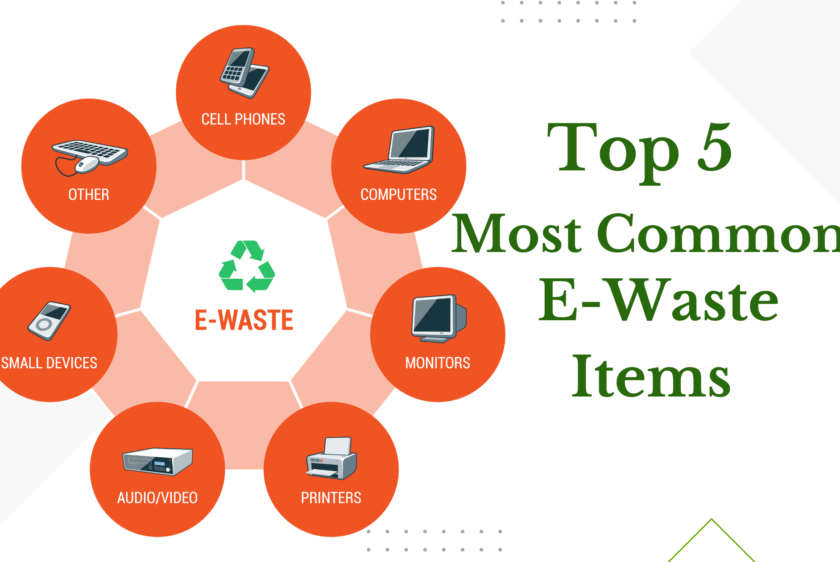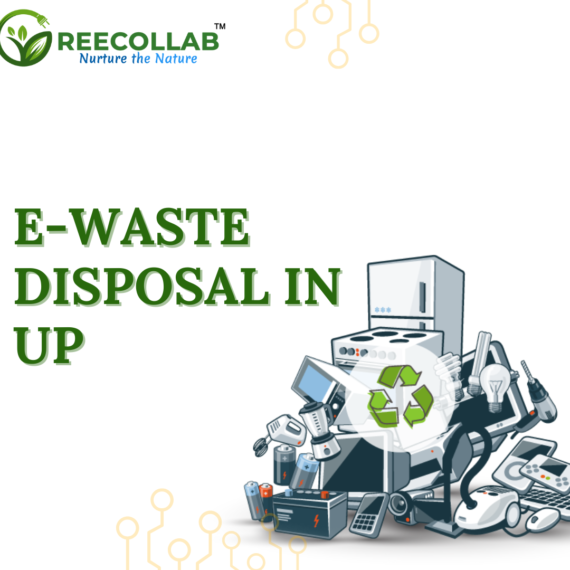
Top 5 Most Common E-Waste Items and How to Dispose of Them Safely
In our rapidly advancing digital age, electronic devices have become integral to our daily lives, enhancing convenience and efficiency. However, with this technological evolution comes a significant environmental challenge: electronic waste, or e-waste. The improper disposal of electronic devices poses a serious threat to our planet, as it releases hazardous materials and contributes to pollution. In this blog post, we will delve into the top 5 most common e-waste items, explore their environmental impact, and provide insights on how to dispose of them safely.
Common E-Waste Items That Need Responsible Management

1. Smartphones and Mobile Devices
Constant improvements and innovations in the smartphone industry lead consumers to frequently discard old devices. Smartphones contain hazardous materials like lead, mercury, and cadmium, which can leak into the soil and water if not disposed of properly. Consider recycling programs manufacturers, retailers, or e-waste collection centers provide to address this issue. These programs guarantee the recovery of valuable materials and the safe disposal of harmful substances.
2. Computers and Laptops
As technology advances, the lifespan of computers and laptops shortens, leading to an increase in e-waste. These devices contain toxic materials like brominated flame retardants and PVC, which can release harmful chemicals when incinerated. To dispose of computers and laptops responsibly, explore donation options for still-functional devices or utilize e-waste recycling services. Many manufacturers offer take-back programs to facilitate proper recycling and minimize the environmental impact.
3. Televisions and Monitors
Obsolete TV sets and monitors are major contributors to e-waste because of the fast pace of display technology advancement. Cathode Ray Tube (CRT) TVs and monitors, in particular, contain lead, a highly toxic substance that harms humans and the environment. Look for electronics recycling facilities or community e-waste collection events to safely dispose of these items. Some manufacturers also have take-back programs for these bulky items.
4. Batteries
Batteries, essential power sources for numerous devices, can pose a serious environmental threat if not disposed of properly. Common batteries, such as alkaline and lithium-ion, contain heavy metals like cadmium and lead. Recycling programs for batteries are widely available, often found in electronics stores or designated drop-off locations. Additionally, some manufacturers offer mail-in recycling services for rechargeable batteries, making it convenient for consumers to participate in responsible disposal practices.
5. Printers and Photocopiers
Printers and photocopiers, often replaced by newer technology, add to the e-waste problem. These machines often have dangerous materials like toner cartridges, which can release harmful substances when burned. To reduce the environmental impact, consider recycling options for printers and photocopiers. Many companies have recycling programs for these devices, guaranteeing the proper disposal of electronic parts and consumables.
Responsible Disposal Methods
Recycling Programs: Utilize manufacturer or retailer recycling programs, which often accept various electronic devices. Many technology companies are committed to responsible e-waste management and provide convenient product recycling options.
E-Waste Collection Events: Participate in community e-waste collection events, where local authorities or organizations set up drop-off points for electronic devices. These events encourage responsible disposal and often include education on the importance of recycling e-waste.
Donation Programs: Consider donating still-functional electronic devices to charities, schools, or community organizations. It extends the life of the device and reduces the overall e-waste footprint.
Mail-In Recycling Services: Take advantage of mail-in recycling services for items like rechargeable batteries. Many manufacturers offer prepaid shipping labels, making it easy for consumers to send their e-waste for proper disposal.
Conclusion
It is crucial to be mindful of the environmental consequences of electronic waste to take a positive look at the digital age. By understanding the impact of common e-waste items and adopting responsible disposal methods, we can contribute to a more sustainable future. The key lies in fostering a collective commitment to recycling and raising awareness about the importance of proper e-waste management. Together, we can safeguard our planet and ensure a healthier environment for future generations.







